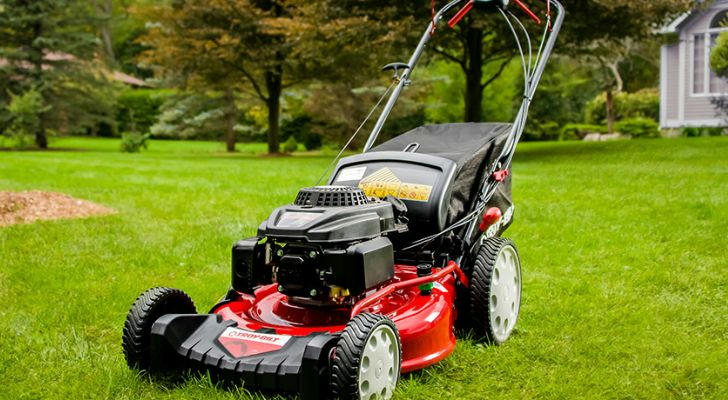The Ultimate Lawn Mower Buyer’s Guide: How to Choose the Perfect Mower for Your American Lawn in 2025
The American lawn is no longer just a patch of grass—it’s a statement of lifestyle, sustainability, and technological savvy. With 72% of U.S. homeowners prioritizing lawn care as a key home improvement project in 2025, the stakes for choosing the right mower have never been higher. The robotic lawn mower market alone is exploding, projected to hit $2.02 billion by 2034, driven by innovations like AI navigation and silent electric motors. Whether you’re maintaining a cozy backyard in suburban Ohio or sculpting an acre of Kentucky bluegrass, this guide cuts through the noise to deliver actionable insights for your perfect match.

Why Your Lawn Mower Choice Defines Your 2025 Landscape
A well-kept lawn isn’t just about curb appeal—it’s about aligning with a cultural shift toward efficiency and eco-consciousness. Traditional gas mowers now account for 5% of residential carbon emissions in the U.S., pushing states like California and New York to phase them out by 2030. Meanwhile, robotic mowers have become the fastest-growing category, with adoption rates doubling since 2023. Take Sarah from Austin, Texas: she slashed her weekly mowing time from 3 hours to zero by investing in a Husqvarna Automower® that syncs with her Alexa. “It’s like having a Roomba for my yard,” she says. The right mower doesn’t just trim grass; it reclaims weekends, reduces emissions, and even boosts property values.
The 2025 Mower Lineup: From Zero-Turn Beasts to Silent Robotic Ninjas
Today’s market offers four powerhouse categories:
1.Zero-Turn Mowers: Ideal for 1+ acre properties, these giants dominate in states like Texas and Florida. John Deere’s Z530R model now includes GPS-guided paths, reducing overlap cuts by 30%.
2.Electric Cordless Mowers: Lightweight and emission-free, brands like EGO POWER+ dominate urban markets. Their Peak Power™ technology tackles slopes up to 30 degrees—perfect for Seattle’s hilly yards.
3.Robotic Mowers: The real game-changers. Worx Landroid models now map lawns via LiDAR and adjust cutting patterns for rain, saving 20% on water usage.
4.Riding Mowers: Still king for large estates, but with a twist: the latest Cub Cadet Ultima ZT1 has a hybrid engine that switches between gas and battery power.
Pro Tip: For medium-sized lawns (0.25–0.5 acres), robotic mowers cover 58% of the market. Their average price dropped 18% last year, making them accessible to 45% more households.
Smart Tech You Can’t Afford to Ignore
The mower of 2025 is smarter than your first car. Look for these innovations:
AI Obstacle Detection: Gardena’s Smart Sileno® scans for toys, pets, and garden gnomes, reducing collision risks by 95%.
Soil Sensors: Bosch’s Indego system analyzes soil moisture and nutrient levels, syncing data with irrigation systems.
Solar Charging: Husqvarna’s new EPOS™ robots use sun-powered stations, cutting energy costs by $120/year.
App Warfare: The best apps (like Robomow’s) let you schedule mows, track boundaries, and even diagnose blade issues remotely.
Avoid buyer’s remorse: Test apps before purchasing. A 2024 Consumer Reports survey found that 33% of robotic mower returns stemmed from clunky app interfaces.
Size Matters: Matching Mower to Terrain
Arizona’s rocky desert lawns demand different tools than Michigan’s damp, sprawling greens. Use this cheat sheet:
| Lawn Size | Top Pick | Why It Wins |
|---|---|---|
| <0.25 acres | EGO POWER+ LM2102SP | 60-min runtime, folds vertically |
| 0.25–0.5 acres | Worx Landroid WR155 | Handles slopes, avoids flower beds |
| 0.5–1 acre | Toro TimeCutter® SW 3250 | Zero-turn agility, mulches clippings |
| 1+ acres | Husqvarna Automower 450X | GPS tracking, 60% quieter than 2023 models |
Case Study: A Colorado family with a 0.6-acre sloped lawn tried a basic electric mower but spent hours recharging. Switching to the robotic Worx WR155 saved 8 hours monthly and eliminated $240/year in gas costs.
The Cost-Smart Buyer’s Playbook
While upfront prices vary wildly, long-term savings separate winners from money pits:
Gas Mowers: $300–$600 upfront but cost $180/year in fuel and maintenance.
Electric Mowers: $400–$1,200 with $40/year electricity costs.
Robotic Mowers: $1,000–$3,500 but save 90% on labor costs over 5 years.
Financing Alert**: Dealers like Lowe’s and Home Depot now offer 0% APR plans for robotic models. A $2,500 mower breaks down to $69/month—less than most landscaping services.
Where to Shop (and Slash Prices) in 2025
Skip the showroom shuffle:
Early Spring Deals: Retailers discount last year’s models starting March. Ace Hardware’s 2024 “Robo Mower Blitz” saw prices drop 25%.
Trade-In Programs: John Deere offers $200 credit for old gas mowers toward new electric models.
Local Incentives: Check the Database of State Incentives for Renewables & Efficiency (DSIRE) for rebates. New Jersey homeowners get $150 off EPA-certified electric mowers.
Maintenance Hacks to Double Your Mower’s Life
Even robots need TLC:
Blade Care: Sharpen robotic mower blades every 60 operating hours (most apps alert you).
Battery Winterizing: Store lithium batteries at 40% charge in climate-controlled spaces.
Software Updates: Install firmware updates religiously—Husqvarna’s Q2 2024 update boosted obstacle detection by 40%.
The future of lawn care isn’t coming—it’s already here. With 42.6% of mower sales projected to be robotic by 2037, delaying your upgrade means falling behind neighbors who’ve unlocked smarter, greener yards. Ready to join them? Explore the latest market trends and growth forecasts in the North American Robotic Lawn Mower Market Report, then grab your phone—your perfect mower is waiting to transform weekends from chores to choices.
